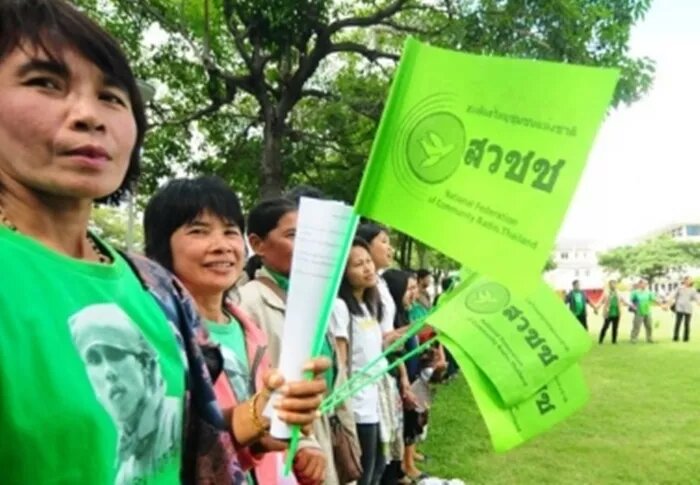
Background and Justification
Community radio is a community media which several countries pay an attention and recognize as the “third pillar”, complementary to both public and commercial broadcasting. In order to ensure media pluralism, several countries allocate fund supporting community radio because of it just exists and insecure in several dimensions (Kenneth Murphy, 2011; Steve Buckley, www2.lse.ac.uk/media@ise). In addition, community radio differs from public and commercial broadcasting; it is run by volunteer and has no income from advertisement.
However, the objectives of “community radio fund” should be clearly linked to the objectives of community broadcasting and community broadcasting policy. The allocation of fund has to be efficient, transparency, fair and proportional in order to allow community broadcasting can develop itself to sustainability (Kenneth Murphy and etc., 2011: 83-86).
Thai state promulgates the Frequency Allocation Organization, and Regulation of Broadcasting and Telecommunications Act of 2010. And the article 52 of this Act is stipulated the establishment of broadcasting and telecommunication research and development fund for public interest. The one of its objectives is to support community broadcasting.
Nowadays, the committee of broadcasting and telecommunication research and development fund, under National Broadcasting and Telecommunication Commission (NBTC), does not clearly set up the pattern and method for supporting community broadcasting. Therefore, this article collects the opinion of community radio operators, who are member of the National Federation of Community Radio of Thailand (NFCR), about supporting role of the fund. And these opinions will be proposed to the committee of broadcasting and telecommunication research and development fund.
International Experience of Community Radio Funding Scheme
Each country has its unique community radio funding scheme because of the varied economic, political and sociocultural contexts as well as the particular histories of broadcasting and the community dimension. Moreover, the scheme is changed in reaction to fundamental changes and ongoing knowledge about the community radio operation (Kenneth Murphy and etc., 2011: 89).
Anyway, the recognition of community broadcasting as the third pillar complementary to both public and commercial broadcasting for allowing every group of the society access, utilize and communicate for its own sake, the state promulgates the law certifying the existence and operation of community broadcasting.
The emerging of community radio precedes the certified law in every country, except Ireland. Ireland recognizes community media and promulgates the certified law, then set up feasibility study for community radio through a pilot project before formal licensing.
The number of community radio station in each country depends on topography, technical standard, spectrum allocation, public policy and community broadcasting policy. For instance, United Kingdom limits community broadcasting area and power of transmitter. Moreover, a community radio station may not be licensed where a commercial station covers a population of fewer than 150,000. This protects the financial interests of smaller commercial stations. Therefore, community radio in United Kingdom is a “small radio station”, and the number of community radio station is less than 200 stations. (Office of Communications, 2005 and 2011)
Community broadcasting licensee or community radio owner could be association, organization or group that has the eligibility and operate according to the regulation. For ownership issue, the law of Thailand defines “community broadcasting” as a broadcasting for public interest, does not seek income from advertisement … owned and operated by a community … And NBTC experimental community broadcasting allowance regulation (2012) defines the eligibility of applicant as association, foundation, juristic person or group that would like to broadcast for public interest, operate for non-commercial profit and strengthen community solidarity. This definition causes clearer operation of community radio in Thailand.
To protect the right of broadcasting, community radio broadcasters have to create network or representative organizations. This is for negotiating and coordinating to the regulator; such as regulation amendment, support, co-regulation, monitoring and evaluation. The representative organization could be formed as association, foundation and etc.